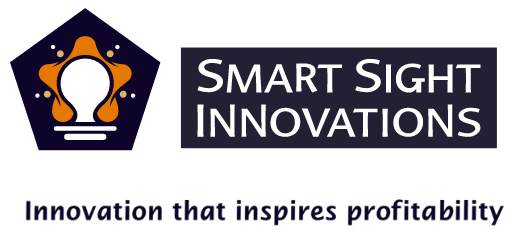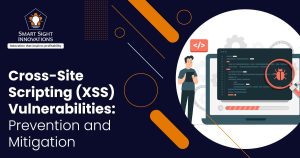 Mobile devices and their countless variations are used to access mobile applications. Thus app optimization is a crucial step in the development process as these devices are portable computers with limited resources.
Mobile devices and their countless variations are used to access mobile applications. Thus app optimization is a crucial step in the development process as these devices are portable computers with limited resources.
A mobile app’s debugging and profiling is a collaborative process. The constructive feedback and assistance of other programmers, testers and users can be helpful. To interact you can use a variety of channels, platforms and forums like GitHub, Stack Overflow and Slack.
You can gather and analyze information and insights from your users and also use analytics and feedback platforms like Google Analytics, App Store Connect or UserTesting.
What Does Profiling of Mobile Apps Mean?
Application profiling is the process of keeping track of how well your application performs in various situations. This enables you to understand how your application behaves when it is under stress and identify the areas that need improvement.
Developers can determine whether a mobile app is properly optimized by profiling it, which involves making efficient use of resources like memory, graphics, CPU, etc. If it’s not optimized, the software will have performance problems including memory crashes and sluggish response times.
Profiling mobile apps is frequently disregarded in the early stages of development. The program is more likely to see abrupt changes in load patterns after it is deployed and the user base begins to expand.
What Is Debugging a Mobile App?
Users want their applications to run smoothly and nearly 62% of them remove an app from their devices if they encounter crashes, frozen screens or other difficulties, proving that debugging can determine whether or not an app is successful. It is an essential step in the creation of any software that ensures quality code.
As it is unavoidable to encounter bugs in a code, debugging can help in swiftly identifying and resolving the problem. It is one of the best ways to raise the quality of your program, whether it’s a syntax mistake, an unexpected outcome or any kind of fault.
Debugging allows developers to check that their code is operating as planned and to look into problems with their apps. The process of debugging an application can be as basic as running it in the debugger or as complex and advanced as using breakpoints and console logging.
It can be stressful and time-consuming to debug a mobile app that freezes or crashes on various hardware or software platforms. Determining the underlying source of the issue, testing your code in different settings and correcting any errors or incompatibilities can help in resolving it.
Best Practices to Debug and Profile Mobile Apps
While we can use profiling to identify issues, it’s always better to minimize or avoid these issues from the beginning. Often the final step in software debugging is using the best practices to help optimize the process and minimize errors. Some best practices that can help you appropriately manage your app’s resource usage are:
-
Blackboxing
It refers to hiding methods or functions while debugging and involves fewer resources to troubleshoot the code. These preset functions and methods are created by the developer to be error-free. Blackboxing the methods or functions aids in focusing on the recently developed code.
-
Commenting
This is a useful debugging technique where a section of the source code is converted into a comment temporarily. The section of the code that generates the error can be commented out before being fixed. By doing this the commented part of the code is not executed.
-
Stress testing
This involves verification testing of a software app’s stability and dependability. The system data is collected and analyzed and objectives are set for the stress test. You then write the automation script, run it, examine the results of the stress test, locate the area of concern and then adjust and improve it to fix the script.
Stress testing helps in identifying potential worst-case outcomes. It is crucial to check whether the application can manage the traffic while executing scripts to make sure it is not overburdened.
-
Breakpoints
A responsive web design breakpoint is a point at which the layout and content will change to provide the greatest user experience. To facilitate debugging, it is essential to insert breakpoints strategically throughout the app. Breakpoints are set by a designer or developer as pixel values.
These rules or concepts can help you develop your coding style, testing routines and problem-solving abilities. Writing relevant names, comments and formatting in your code will help it to be clear and consistent. You also need to test the codes regularly to detect and fix errors early.
Tools to Debug and Profile Mobile Apps
Developers and programmers use debugging tools to detect faults in codes through improved visibility, analysis and testing. Some of the most widely used debugging tools are:
1. Testsigma
Testsigma is one of the top open-source test automation platforms and a leading debugging tool. It offers a single and completely customizable platform that provides maintenance-free testing by allowing you to develop end-to-end tests for web and mobile apps.
It’s simpler for an individual to produce high-quality programs when using a codeless test automation approach. You can create specific test attributes based on the requirements and collect necessary information.
2. Dalvik Debug Monitor Server (DDMS)
The DDMS is a tool that helps you debug your application, by debugging it inside a Dalvik Virtual Machine (DVM) using the Android Debug Bridge. The DVM is an android virtual machine designed with portability in mind. It enhances the virtual machine’s memory, battery life and performance.
The IDE is connected to the device’s running apps by DDMS, which serves as a link between the two. With the help of the DDMS, you can move files to and from the device, simulate incoming calls and SMS and send position information to simulate GPS information.
3. Airbrake
For small and midsize business needs, Airbrake is the best bug-reporting tool. It is developer-focused and mostly cloud-based and can also be integrated with the applications. It can be installed quickly in a variety of languages including JAVA, Python, Ruby, etc.
It provides an easy error-monitoring system that makes it very simple to identify any project problems or faults.
4. Chrome DevTools
Google Chrome is every user’s first option because it is the most popular web browser. The browser includes debugging tools called Chrome DevTools and with the help of these tools, you can efficiently edit pages and troubleshoot issues. This allows for creating and launching better apps.
5. ReSharper
Developers add the ReSharper productivity plugin to Microsoft Visual Studio as it automates the majority of the coding procedures. It scans your code as you type for compiler issues or runtime issues and helps with intelligent remedies. Thus providing code analysis and detecting errors and problems even before compiling it.
6. Memfault
Memfault is a cloud-based platform that speeds up software development by enabling users to track down bugs or monitor their devices. Developers provide IoT devices for a variety of markets, including smart homes, industrial automation and healthcare. With the help of Memfault, you scale the devices and build better and smarter IoT devices for these markets.













